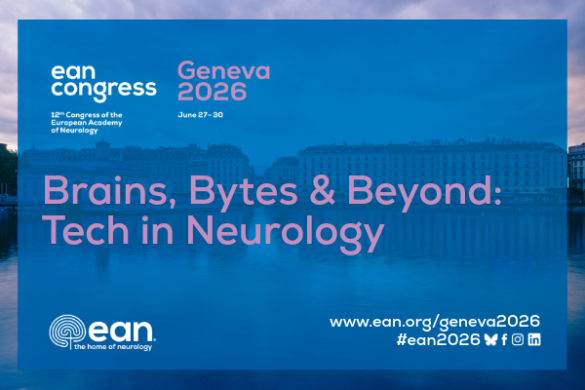by Vasilis-Spyridon Tseriotis
At a one of the first sessions of the EAN Congress 2025, chaired by Richard Dodel, experts sounded the alarm on the immense and often under-recognised burden of neurological diseases across Europe. With a focus on disease burden, economic impact, and the strategic future of neurology, the session offered a panoramic yet detailed view of why neurology should remain central to health policy and research funding agendas. The session was not just a dry recital of statistics. Each lecture built a compelling case for urgent action, grounded in rigorous data and future-looking insight.
Maurizio Leone opened the session with a presentation of the most recent findings from the Global Burden of Disease (GBD) Study 2021, which placed neurological disorders as the leading cause of disability-adjusted life years (DALYs) globally, with an estimated 449.2 million people being affected by one or more neurological disease in the WHO European Region. The EAN-led regional analysis highlighted significant national variation within Europe, but also a clear, shared challenge: neurological disorders are a major public health crisis.
Migraine, dementia, stroke, multiple sclerosis, Parkinson’s disease, and epilepsy stood out among the most burdensome conditions. Interestingly, the top six remained consistent across the continent, underscoring the universality of the issue. While infectious neurological diseases show a declining trend, degenerative and vascular conditions are on the rise, driven by ageing populations and lifestyle factors.
Mateo Montes Martinez showcased the COIN-EU (Cost of Illness in Neurology in Europe) study, an ambitious project quantifying the financial burden of neurological disorders across 47 European countries. By factoring in direct medical costs, indirect productivity losses, and informal care, the study revealed a sobering reality: neurology consumes a significant portion of Europe’s healthcare spending, often without the visibility of other disease groups.
Dementia emerged as one of the most expensive conditions, driven by long-term care needs. The methodology used by COIN-EU, including prevalence-based costing and national-level adjustments, provides policymakers with the tools to simulate interventions and plan resource allocation more effectively, but also highlights the need to standardise methods in future studies.
One of the most eye-opening segments of the session came with the discussion of sleep disorders in a presentation by Claudio Bassetti. Despite being often overlooked in neurology policy, sleep disorders account for a staggering 25% of the total cost burden of neurological diseases in Europe, according to the COIN-EU Sleep Disorders sub-study. That’s equivalent to a 3% GDP “tax” across the continent.
Missed the session?
Watch it on demand via our Virtual Congress Platform – click here!
This finding triggered a visible response in the audience, underscoring how under-recognised these disorders remain despite high prevalence and substantial impact on cognitive function, cardiovascular health, and quality of life. Critical gaps in prevalence data in lower-income countries were also mentioned, calling for investment in sleep research and better clinical coding.
The final lecture, also by Claudio Bassetti, looked forward rather than back. Since 2021, the EAN General Neurology Task Force has worked to define and strengthen the field of general neurology, identifying four priority areas: definition, practice, education, and research. Six targeted initiatives and 16 concrete recommendations have already been proposed, aiming to elevate the visibility, funding, and strategic direction of general neurology across academic and community settings.
This lecture offered a refreshing policy-focused close to the session, reminding participants that the future of neurology hinges not only on research, but also on the coexistence of general neurology practice with various subspecialties.
With four compelling lectures, this session delivered a clear message: the burden of neurological disease is vast, under-recognised, and economically unsustainable without bold policy reform and increased investment. From migraine to dementia, and from sleep disorders to general neurology, the take-home message was that it’s time for neurology to take centre stage in public health strategy.











